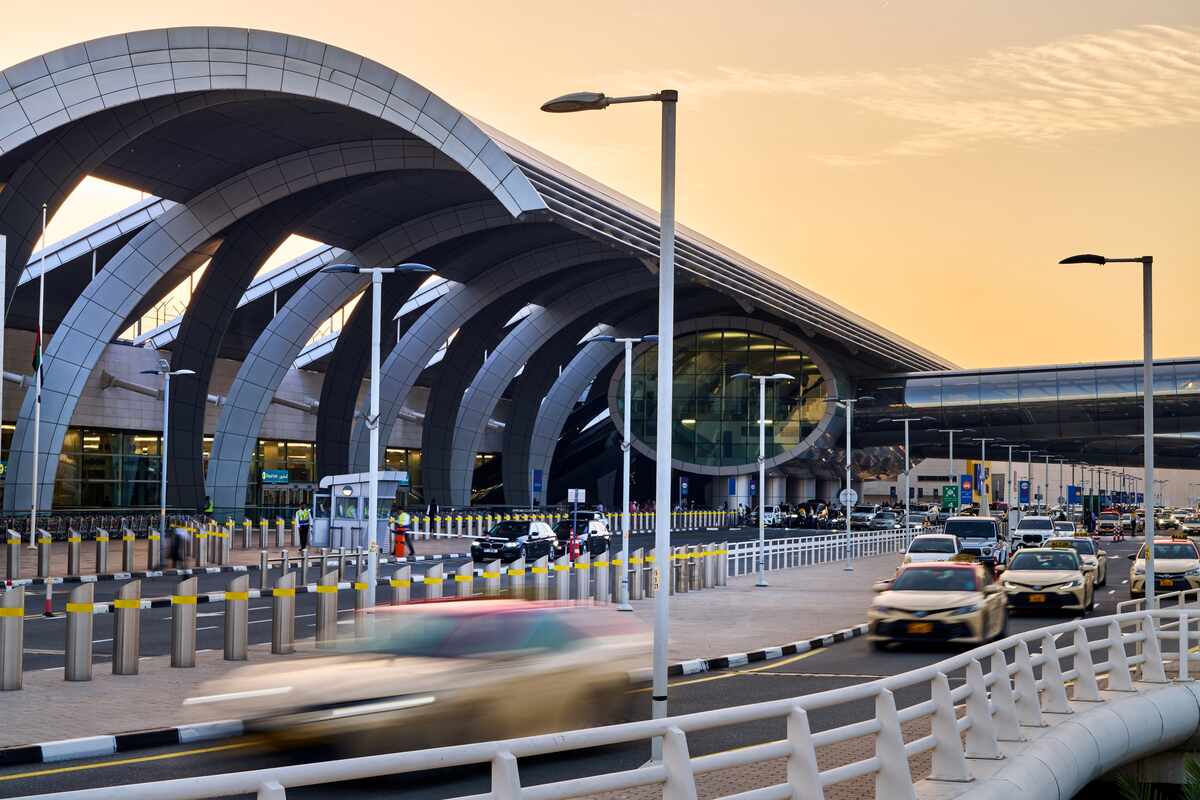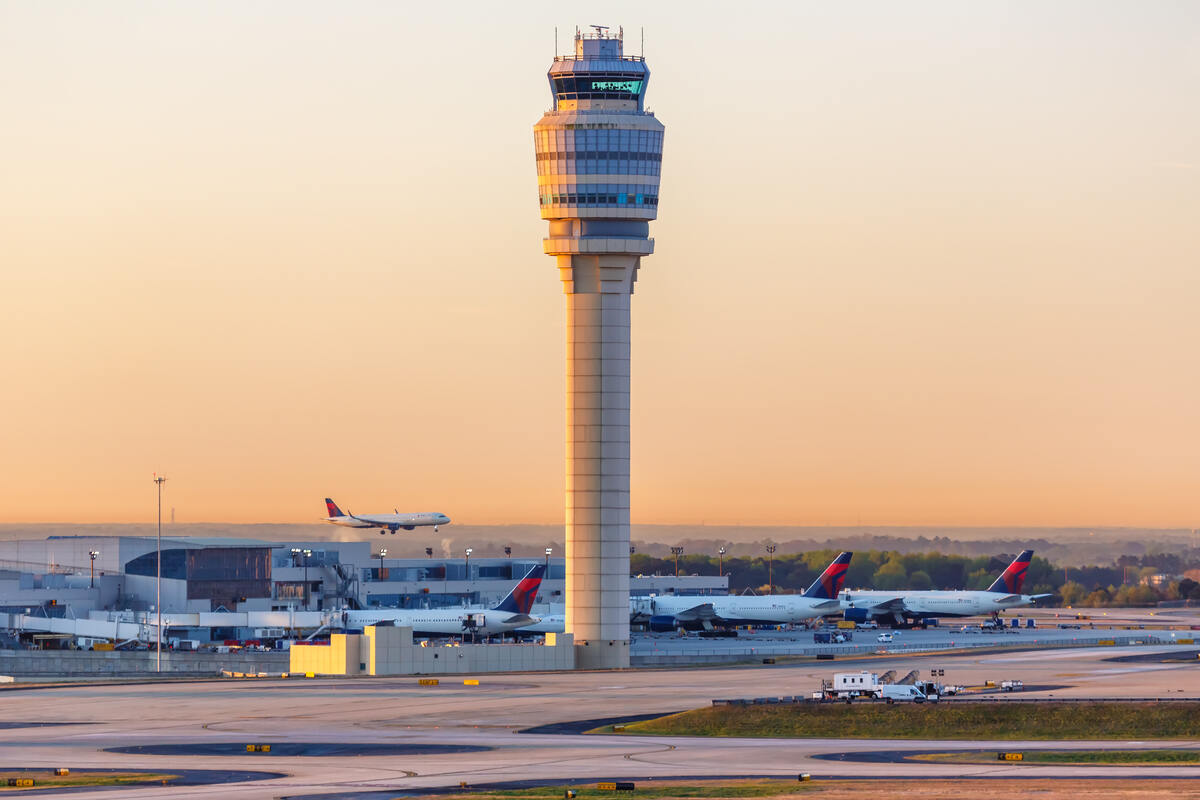The Hartsfield-Jackson Atlanta International Airport (ATL) was yet again named the busiest airport in the world in April 2025. In its most recent report, the global travel data provider OAG unveiled its list of the busiest airports in the world for this month, noting that Hartsfield-Jackson maintained its top ranking for the third year in a row.
With 5.2 million seats, the airport’s capacity remained unchanged compared to April 2024. The airport handled a record number of international passengers in 2024 as it continued its recovery back to pre-pandemic traffic levels.
Overall, a total of 108.1 million travelers made 2024 the second-best year for the airport behind its own 2019 record of 110 million. The airport handled 354,974 metric tons of international cargo last year, up 7 percent. Notably, takeoffs and landings also rose 2.6 percent to 796,224.
As airlines continue to expand thier flights and operations, the Hartsfield-Jackson Atlanta International Airport expects to surpass its record with 125 million travelers annually over the next five years.

Top 10 busiest airports in the world in 2025
1. Atlanta Hartsfield-Jackson International Airport (ATL)
Atlanta Hartsfield-Jackson International Airport was ranked the Busiest Global Airport with 5.2 million seats, with capacity unchanged compared to April 2024. It was also the busiest airport in the world in 2024, with 62.7 million seats. It also held the top spot in 2023 and 2019.
2. Dubai International (DXB)
Dubai International Airport came in second place with 5 million seats, a 3 percent increase in capacity compared to last year. In 2024, DXB’s airline capacity grew significantly with seats increasing by 7 percent year-on-year. Capacity also grew 12 percent compared to 2019.
Last year, Dubai International Airport also retained the title of the World’s Busiest International Airport with 60.2 million seats. It was also the busiest airport in 2023 and 2019.
3. Tokyo International Airport (HND)
Tokyo International Airport ranked as the third busiest airport in the world this April with 4.6 million seats, recording a growth in capacity of 2 percent. Last year, the airport also came in third place with 55.2 million seats, a capacity increase of 5 percent compared to 2023.

4. London Heathrow Airport (LHR)
London Heathrow Airport remains Europe’s busiest airport in April 2025, a position it also held in April 2024 and April 2019. The London airport’s seat capacity for this month stands at 4.4 million seats, a 3 percent increase compared to last year. It also ranked as the busiest airport in Europe for 2024 with 51.6 million seats, 4 percent higher than 2023 and 3 percent above 2019.
5. Istanbul Airport (IST)
Istanbul Airport was the fifth busiest airport in the world as of April 2025. Looking back at April 2019 global rankings, Istanbul Airport has moved the most places in the period to 2025, up to 5th position this April compared to 19th position in April 2019, a move up of 14 places.
Istanbul Airport is also the second busiest airport in Europe with 4.2 million seats, with capacity increasing by 5 percent.
6. Dallas Fort Worth International Airport (DFW)
With a seat capacity of 4.16 million, DFW was the sixth busiest airport in the world this month, declining one spot compared to April 2024.
In 2024, Dallas Fort Worth International Airport ranked as the fifth busiest airport. The airport surpassed its 2019 performance, with a capacity increase of 18 percent, marking the highest growth among the top ten airports. Additionally, compared to 2023, DFW expanded its capacity by 7 percent.
7. Shanghai Pudong International Airport (PVG)
Within the top 10 busiest airports in the world, Shanghai Pudong International had the biggest increase in capacity in April 2025 compared to April 2024 with seats increasing by 8 percent. Shanghai has moved up the global rankings to 7th place this month compared to 10th position last April.
Last year, Shanghai Pudong International Airport also saw the most rapid growth among the top ten airports, with a 29 percent increase in capacity compared to 2023. This was largely due to China’s ongoing air travel recovery following the global pandemic. As a result, PVG moved from the 15th busiest global airport in 2023 to the ninth busiest airport in the world in 2024.

8. Guangzhou Baiyun International Airport (CAN)
With a seat capacity of 4.14 million, Guangzhou Baiyun International Airport was the eighth busiest airport in the world in April 2025.
Notably, the airport made its first entry into the Busiest Global Airports list last year, coming in at seventh place in 2024 compared to 12th place in 2019,
9. Chicago O’Hare International Airport (ORD)
In April 2025, Chicago O’Hare International Airport’s seat capacity reached 4.07 million, maintating its position as the 9th busiest airport in the world. The airport’s capacity grew 8 percent last year to 46.9 million seats.
10. Denver International Airport (DEN)
In last place came Denver International Airport with a seat capacity of 3.9 million. The airport’s ranking declined from 7th place in April last year. In 2024, the airport held sixth position with a seat capacity of 49.2 million, up 5 percent compared to 2023.

What makes an airport the busiest?
Two main factors contribute to an airport being the busiest globally. This includes:
Total passenger traffic
OAG ranks the top 10 busiest global airports in the world using total airline capacity, which includes both domestic and international flights. The rankings are based on scheduled capacity in each month and compared to the equivalent month of the previous year.
An airport’s total passenger traffic is a comprehensive measure that includes enplaned passengers (individuals boarding flights at the airport), deplaned passengers (individuals disembarking from flights at the airport) and transit passengers (individuals who pass through the airport en route to another destination without exiting the airport.
This metric encompasses both domestic and international travelers, providing a holistic view of the airport’s activity levels. For instance, Dubai International Airport achieved a record 92.3 million passengers in 2024, supported by connections to 272 destinations across 107 countries which are served by 106 international airlines.
Connectivity and airline partnerships
The busiest airports in the world serve as major hubs that offer extensive direct and indirect connections. Direct connectivity refers to nonstop flights to various destinations, while indirect connectivity involves flights with connections, expanding the reach of the airport’s network. For example, Heathrow Airport offers flights to 214 destinations across 84 countries, enhancing its appeal to travelers seeking diverse routes around the world.
Global airline alliances also enable airports to offer coordinated schedules, joint marketing efforts and shared facilities, leading to increased passenger traffic. An alliance between American Airlines and British Airways, for example, may provide a flight from any city in the U.S. to London on an American-operated plane, but a return flight on the same ticket may be on a British Airways-operated aircraft. Studies have shown that such alliances can result in a significant uptick in passenger numbers.
Another factor contributing to an airport’s ranking as one of the world’s busiest its its location. Airports situated at crossroads of major international routes naturally become preferred transit points. Singapore’s Changi Airport, for instance, benefits from its strategic position in Southeast Asia, making it a favored stopover for flights between various continents.

Trends shaping airport traffic in 2025
Several factors continue to shape the level of airport traffic globally. OAG’s Chief Analyst John Grant says that the capacity challenges of 2024 will continue into 2025 and indeed through to 2026 as airlines struggle with the fallout from MRO issues and production delays from major aircraft manufacturers. Capacity is expected to grow between 3-4 percent during the year.
Grant adds that demand for air travel will generally remain strong, and the pre-pandemic normal travel patterns will resume. Corporate travel demand will gradually recover, compensating for any loss driven by the revenge spend travellers. Therefore, the global load factors in 2025 is expected to broadly remain at similar levels to 2024.
On the price front, average airfares are unlikely to fall significantly, as that balance between supply and travel demand remains crucial. That is despite the price of oil falling to one of its lowest since September 2018. Shortages of supply, rising operational costs, along with a strong U.S. dollar will likely impact any scope for dramatic reductions.
Another trend shaping the aviation sector is technology. New technology and the expansion of long-range single-aisle aircraft will lead to a series of new routes being launched to smaller market pairs. Likely regions for development are the North Atlantic, South and Central Asia which should lead to exciting announcements later in 2025. Airports and airlines will also increasingly use AI in their operations as they seek to drive further efficiency and reduce cost.
Frequently Asked Questions (FAQs)
What is the busiest airport in the world in 2025?
The Hartsfield-Jackson Atlanta International Airport (ATL) was named the busiest airport in the world in April 2025.
Is Dubai the busiest airport in the world?
Dubai International Airport was the second busiest airport in the world in April 2025 with 5 million seats. Last year, it retained the title of the World’s Busiest International Airport with 60.2 million seats. It was also the busiest airport in 2023 and 2019.
How are airports ranked by traffic?
The top 10 busiest global airports in the world are ranked using total airline capacity, which includes both domestic and international flights. The rankings are based on scheduled capacity in each month and compared to the equivalent month of the previous year.
What factors make an airport a global hub?
An airport becomes a global hub when it is strategically located between major routes, offering extensive connectivity and strong airline presence. High transfer traffic, advanced infrastructure and efficient operations enhance its role. When tied to major economic centers, it attracts both business and leisure travelers.
Which airport is growing the fastest?
Within the top 10 busiest airports in the world, Shanghai Pudong International had the biggest increase in capacity in April 2025 compared to April 2024 with seats increasing by 8 percent. Shanghai has moved up the global rankings to 7th place this month compared to 10th position last April.







